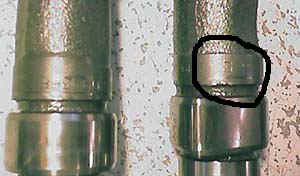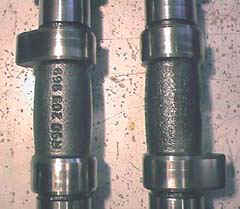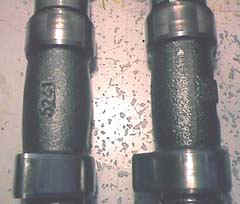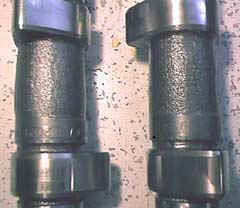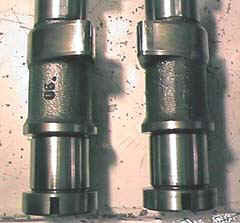Camshafts
- Condition of camshafts initially look quite good. There is a small amount of pitting on some of the lobes not enough to worry about at the moment. Will check for size soon. The journals look ok for finish with no scoring, repair of these would be very expensive as there are no shells.
- Warning !!! I found that the Haynes manual identifies the exhaust camshaft as being marked with an 'E'
- this is wrong in my case, the mark 'E' is for Inlet and the mark 'A' is for exhaust.
- Be very sure to make your own record as to which is which, take special note of the positions of the sprocket cut outs and the first pair of camlobes. The picture below right shows positions prior to removal, and on left a better view of the set up.
- I TAKE NO RESPONSIBILTY FOR THE WAY IN WHICH YOU REPLACE YOUR CAMSHAFTS - JUST BE BLOODY CAREFUL.
Note added 10/09/01 - re-prints of the manual appear to have been corrected - please double check !!
- Note added 09/03/04 - A helpful word from Patrick Brodersen in Germany ... and I just want to give you some information about the cam marks "E" and "A". You might know already that inlet in German is "Einlass", thus the cams are marked "E". Exhaust in turn means "Auslass" in German, thus the "A". Silly mistake to make on Opels side, as these Engines were used in other countries as well I suppose, not all of which are German speaking. "in" and "ex" would have done the job, even for the average non English speaking German car mechanic. But at least it proves that this unusually efficient and powerful engine was actually conceived by Opel and not by GM/USA.
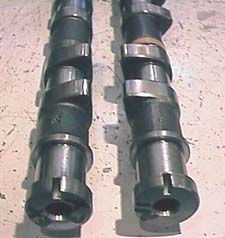
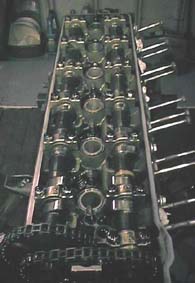
'E' for INLET (ringed)
